Mike Hogue bought a new solo canoe this summer. After fishing and using his solo canoe for awhile, he is now wondering why he waited so long to buy this boat.
I bought a new solo canoe this summer. After fishing and using my solo canoe for awhile, I am now wondering why I waited so long to buy this boat. I've owned lots of what I call "Quiet Water" boats. I've had canoes, kayaks, kick boats, float tubes and now a solo canoe. Quiet Water boats appeal to me in that these boats tend to be uncomplicated and free of electronics or other gadgets I think distract from the overall experience.
I've been around water since I was a kid
and began boating an early age. I actually spent more time boating than fishing as a youth. I like being close to water, getting a bit of exercise from paddling and the lack of noise allows me to better experience the places I fish. I also believe that by fly fishing other kinds of water (warmwater lakes and ponds) and other types of fish, I am extending my fly fishing season. When most trout anglers are done for the season because it is too hot, I am out on the water chasing bass, bluegills, crappies and smallmouth. With Quite Water boats, I can enjoy being on the water and during warm summer nights, I am able to cool off. If the fishing is slow, I still have lots of fun boating. Lots of pluses and bonuses.
Each boat I've owned has a strength and a weakness.
Some boats are faster, some are better to fish out of and some are easier to store or manage. After owning a kayak for about 6-7 years, I find that sitting low and not being able to stand or cast are two major disadvantages in this boat's design. I do like the ease of use, speed and also how light weight these boats are. I began looking for a compromise between a better fishing boat, ease of use, storage and weight.
I originally thought about a solo canoe several years ago
when a friend of mine got a hand made Kevlar Adirondack solo canoe. He made several fishing videos for the boat maker and sent me links to view his videos. For some reason, I thought these boats were too expensive and not really affordable for me. Also the Adirondack boats are largely handmade and sold locally in the North Country Region so I didn't really have much of a place to try them out.
The solo canoe thing got rekindled
while I was on vacation this year. While on my trip, I stopped and visited a long time fly fishing friend at his house. We began talking about gear, rods, reels and the like and I started asking him about all the boats he uses ( which he has several ). He told me one of his favorite boats is a solo canoe. I looked at the boat and I asked him if he ever thought about getting a Kevlar solo canoe.
He looked and smiled and said,
"This boat is a composite. It's hull is made of laminated material and it is almost bomb proof. You can smash it against rocks, drop it, kick it and it won't break. You can't say the same about Kevlar. This boat also weighs 30 pounds or so. Pick it up."
I did and it was surprisingly light.
A light bulb clicked on in my head and I began thinking once again about a solo canoe. When I began the process of searching for a new boat, I found surprisingly very little information written by fly fisherman for fly fishers about fishing out of a solo canoe. Most of the fishing information is mostly written by backwoods anglers that mostly spin fish and while I have nothing against those kinds of gear anglers, I thought it might be good if I outlined what I did and what sorts of boats I looked at. Also I thought it might be good to look at how I rig my boats since I have been doing this for a number of years.
To begin, a solo canoe is a short one person canoe.
These boats can be made of Kevlar, fiberglass or a composite laminate material (usually called Royalex). These boats are light, quick, easy to use, easy to unload and offer many great advantages that several other boats don't have. These boats have open hulls and you can carry lots gear in them for trips, photography, hunting, camping and fishing. As a bonus, some people can boat with their dogs. My dogs are too crazy to sit in a boat and would tip me over. The open hulls reduce weight and tends to raise the boater up higher than in a kayak or float tube.
Solo canoes are usually 10-14' long.
Some have seats in them, some seats are mounted to the floor, some have no seats and some have traditional seats that are attached to the sides of the boat much like a bench or decked seat.
Solo canoes are similar to kayaks.
You sit in the middle. One of the big differences in a solo canoe is that the decks are open and the sides are high. Some sit on top kayaks have similar sort of features, but they are different in the angles you sit. In most kayaks, you sit low and down close to the water. In a solo canoe you sit up higher and you sit in a "s" shape much like you do in an office chair. In kayaks (all of them), you sit in an "L" shape and I find this is quite uncomfortable over time. It hurts my back and knees when fishing.
A real disadvantage with a kayak
is that it is next to impossible to stand in these boats and cast. You often can't see what you are casting at because you are so low. Kayaks are generally very fast and also they don't tip over easily because they are so low to the water. Because kayaks are generally very hard to flip; in fast, high or swift water these boats are an advantage.
Solo canoes are made of a rigid material
that allows you to stand in them. Although you need to take your time to gain your "sea legs " as the hulls tend to rock somewhat and the bottoms may tend to flex. Once you get used to the rocking and your boat this really isn't an issue.
There are some newer sit on top kayaks
that have a standing feature. I looked at these boats and found that most of these have multi pieces with lots of edges to catch and hang fly line. These boats also tend to weigh a lot and are hard to load and unload. I think with the added parts, extra weight and also unusual clips, these boats are actually harder to fish out of, move and manage.
Another issue for me is getting in and out
of my kayak. You have to climb down and into the cockpit which is hassle sometimes. There are times when I've had waders and wading shoes on and it is almost impossible to get in and out. In solo canoes, they are easy to get in and out of. Easy to pick up and easy to launch. All pluses.
Ah, a kickboat, now that's what you need.
I had considered a stand up kickboat and looked at several of these models. Kick boats aren't a real boat to me. Sure these things float but because the bodies of these boats are soft, they aren't the best to stand in. Some models also require a lot of time to set up and blow up. All of these boats have belts, straps, frames and lots of parts to manage, haul and deal with. Kick boats also aren't very fast and are up quite high. Most kickboats tend to short and wide and I find you often get blown around too much. This tends to require lots of rowing just to stay in one spot.
I do like kickboats for fishing
as it is high and easy to see and cast out of. I just don't like boating and managing a kick boat. I would rather just take a real boat down, load it and start fishing then manage all the parts. Also a canoe is an actual boat, designed for boating. You just need to find the right design and model.
After researching various models and kinds of boats,
I narrowed my choices down to three models. One model was made and sold under as a relabel for a box store chain, that boat came as a camo color which I sort of excluded. I figured the worse case would be me getting that camo boat. My final boat choices to look at were boats made of fiberglass and Royalex. I looked at 3 different models from 3 different companies. I was able to try 2 of the boats in the water and see how I liked them.
I went to another shop and found last year's model
at a discount. It was identical to the boat I liked but it had a better seat ( webbed ) , it was a nice color ( green ) and it was a mark down. I was able to get the boat, seat back and paddle for about the price of a current model year boat. That's the boat I got. Do some shopping and chances are you can get a deal. Buying boats is like buying cars, bikes or motorcycles. Look, shop and think. There are demos, used boats and last year's models. For what its worth, I got an Old Town Pack 12. I looked at Wenonah and Mad River. I like the handmade features found in Placid Boats and Hornbecks, although those are very pricey hand made boats.
Tricking your boat out for fly fishing:
For solo canoe fly fishing, you really need to use a kayak paddle. If you don't get a kayak paddle you are going to doing a lot of arm switching on each stroke or "J" stroking. With a kayak paddle, you make quick dips and alternate, left hand-right hand. You do need to get a very long kayak paddle for a solo canoe. The typical kayak paddle is a 220 cm paddle. For a solo canoe you need a longer paddle like a 240 cm or 250-260 cm. The main reason is the boat is wider. I got a 240 cm paddle for my boat. My paddle has aluminum shafts which aren't the most light weight but it is durable and it floats when you drop it in the water. Some paddles are graphite or carbon fiber, those tend to be more expensive and not as durable. Some of those sink when dunked. Some kayakers use a leash. I tried those and found that I tend to hang lines on these. If you are a total klutz you might want a paddle leash and a rod leash. I've never lost a rod or paddle in the water yet (knock on wood).
I added a seat back to my bench seat.
This a traditional canoe seat back that was made by the boat manufacturer to match the seat. It is much like an old lawn chair without legs that folds and locks onto the bench seat. The bottom has clips which lock into the bench. There are some newer models that are made of a folding material with belts. I also got a stadium seat cushion at a discount store for a seat pad. I figured if it gets lost, ruined or goes in the lake no big deal.
I also added foam pads
to the seat bench and front yoke. I zip tied foam pipe insulation to each as a padding for my rods. I did this so that my rod wouldn't roll around and also keep the rod from getting chipped up so much. Boats are typically very hard on rods. I've broken several in boats. I have also chipped the coating on reels and worn the butts of rods down.
Boats are typically very hard on rods. I've broken several in boats.
Many years ago, I made some homemade rod tubes
out of electrical conduit. I cut 1 1/2" tubes down to about 4'. I cut the end in sort of a tapered "s" so that rods can be pulled in and out . I taped the end with duct tape to keep some of the water out. Now those fancy rod tubes won't get dirty or chipped in the boat. I have used Velcro or quick release boat straps to hold tubes to the seat and yoke in the past. Always assume you are going to dump, spill, flip or get wet and you will always properly rig your boat out.
For bag, I have an old canoe thwart bag.
This is a special bag for a canoe. A thwart bag is attached to the front yoke and hangs down. You can put fly boxes, leaders, spools, reels in the bag . I have a fleece fly patch pinned to the bag and stick flies on them. Finding a thwart bag is not easy, only a few companies make them, my old one I am keeping as there is no new replacement for mine.
Near my seat I have a Velcro fly patch which I think came out of a pack I had. You can make your own fly patches out of 2mm fly foam or jumbo boat patch foam pads and cut them to size. Use Velcro tape and put the tape on the inside walls of the hull.
For safety I have a kayak fishing jacket.
This is life vest that is designed for kayaking and fly fishing. This has pockets that zip and can hold fly boxes and also various items like leaders and the like. I have a plastic boat whistle that is tied to a loop in one of the pockets. If I get into trouble I can blow the whistle for help. I can tie things to my vest and the most important thing is if you don't like your vest you won't wear it. I wear mine all the time.
I wear a tool lanyard
when boating. These hold clippers, hemostats, dry fly paste, a small light, lens cleaners, leader straightner and a fishing charm. You need a weight in the middle of the lanyard so it stays centered. I used a fish charm from a key ring I attached to one of the snaps. Some lanyards have a clip that you pinch to your pants so it doesn't dance around. I've found that the charm works best for me. You need to choose your charm carefully and as it is creates fishing karma and good luck.
For clothing you might wish to wear river shorts or a swim suit.
River shorts are made of lightweight material and have sewn in mesh underwear that dries out quickly. A good many cloth swim suits tend to hold water and are heavy when wet, that's why I like quick dry, mesh lined shorts. I also wear river sandals that have quick draw laces and open sides that let water, sand and rocks out. By wearing better river gear, getting wet isn't so much of an issue. On some rocky rivers I have worn wading shoes and wet waded. Wading shoes tend to be heavy when wet and also tend to collect sand, rocks and water. If I think the water is going to be cold, I have worn waders also. Wet wading is a way to also cool off on hot summer days on the river or lakes.
I have a boat bag
in my truck with several ropes. One rope I have used in the river has a tree clamp on it. This is like a sort of big pliers and it clamps to logs or branches. I have a quick release snap on the other end. I usually tie this to bow. I have a small anchor attached to about 20' of rope and it folds up. I don't really use this much but you might like one for your boat. I also have a drag chain. I have a heavy log chain attached to another 20' rope. One the other end is a snap. When doing river floats, a drag chain slows your flow so that you drift with the bottom of the river not the top. This is a thing I picked up from the Ozarks and on some streams drag chains are prohibited. You need a snap in case you get wedged into a log or a rock and can't get out. The chain has to be very heavy and you need about 1 1/2' for this to work. The drag chain snakes through rocks most of the time. If you get wedged, it will pull the boat back and knock your teeth out, hence the snap. Paddle back upstream in a pinch and unhook it.
Lastly to transport my boat,
I have a ladder rack on my truck. I put pipe insulation with cable ties on the bars to pad it. I can change those out each season or remove them if I add a box to the rack. I use ratcheting straps to lock my boat down and put small pieces of cardboard against the hull to avoid deep marks being created from the tie downs.
Duct tape is like the Swiss army knife for boaters
You might want to keep a roll
of duct tape in your boating bag, car or truck. Duct tape is like the Swiss army knife for boaters. You can tape, patch or mend anything in a pinch with it. One fishing catalog goes so far as to show how to set broken limbs with duct tape in the woods. Another good item to keep handy in your boat is a large car type sponge. You can use this to mop up bilge water that accumulates as you paddle or climb in and out of the boat.
Now I am seeking out
new places to float, rivers to explore and fish. I've loaded up on fishing and canoe guide books and maps . I am looking for my next adventure in a new boat. I am reading canoe guides and indexing those against fishing guide books to determine good boating and good fishing locations. In the Adirondack region alone of New York there are something like 2,500 lakes and ponds and 1,500 miles of rivers to explore. I don't think I will be hurting for places to fish any time soon. I live near one of the Finger Lakes, Cayuga Lake and I have been fishing on this lake already.
Solo Canoe Manufacture's Links:
Old Town Canoe
Wenonah Canoes
Mad River
Hornbeck Boats
Placid Boatworks
You can see a fly fishing video of my friend Bill Reed (Bill is a marketing exec with Orvis) fly fishing in a Hornbeck Boat in the Adirondacks:
About Mike Hogue
Mike is the owner of Badger Creek Fly Tying and is an avid fly fisher. Mike's articles have been published in many magazines. Mike lives in upstate New York in an restored farm house outside of Ithaca. You can reach him on the internet at www.eflytyer.com or email at Mike@eflytyer.com.
- Log in to post comments

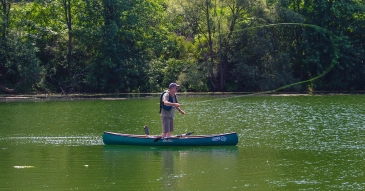
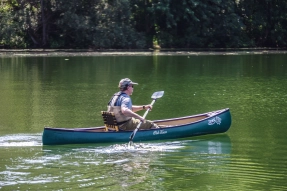
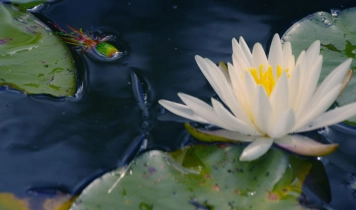
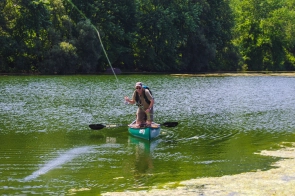
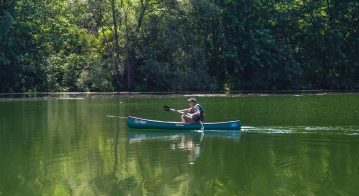
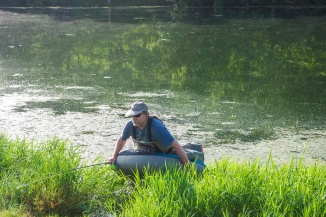
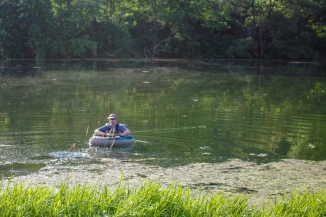
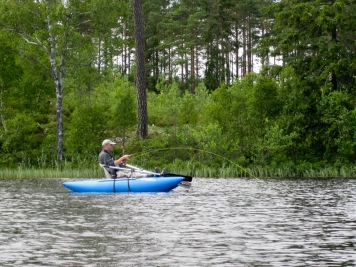

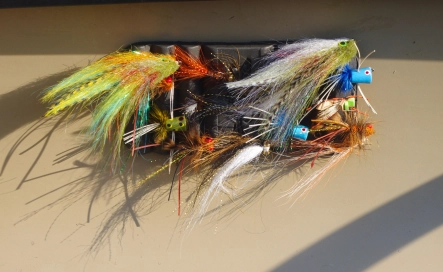
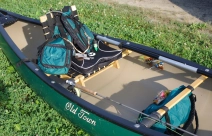

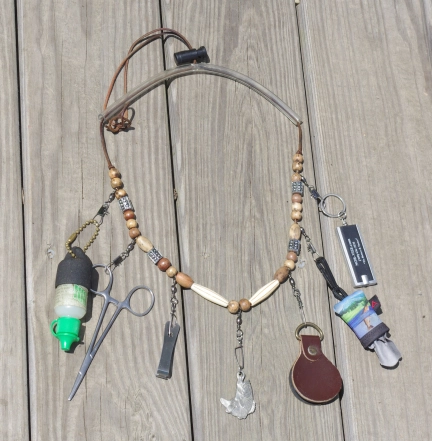
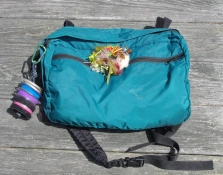
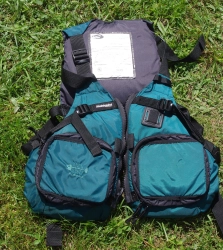
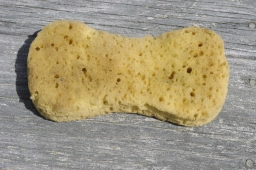

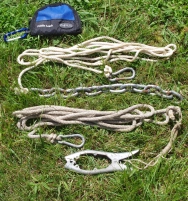
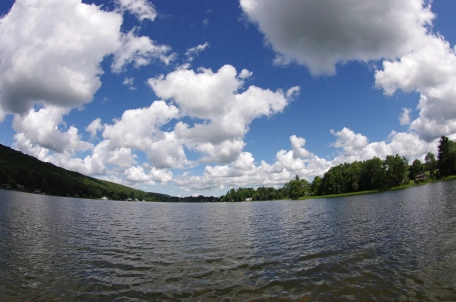
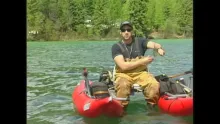

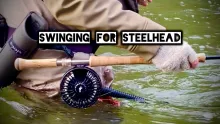
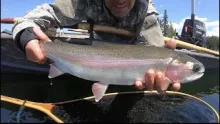
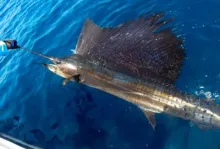
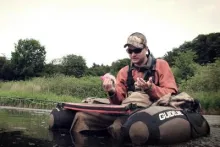

Mike this is a great
Mike this is a great post. I paddled white water for years and sold my boats a few years ago. I have had the bug for a solo flat water boat to fish out of for a while. I'm going next Friday to pick up my new boat. I really like how you have your boat set up....very user friendly.
So is it possible to
So is it possible to learn which boat was the "relable" for the big box stores?
Sounds like you have
Sounds like you have a hole in your boat if you use a shovel! You use a double paddle because the boat is wide and short. I don't want some old aluminum boat that is 20' long and weighs a ton. I want a light boat, that is easy to load, easy to use and won't break my back.
I had an old aluminum boat about 15 years ( and about 6 boat swaps ) ago. Try carrying that boat more than 5 ' and you'll ask me for the name of the boat dealer. I like my back and also I don't want to sit with the front in the air and the rear under water. Gruman does one thing well..... making airplanes....not so much for boats. Aluminum is heavy, loud and grabs rocks. Gotta love that 9" keel as well!
You can also use clunky glass rods, automatic reels, level flylines and vinyl/rubber waders... Red Balls anyone? This is very high tech stuff.
I have a Michi canoe
I have a Michi canoe since 1990 made of Aluminium. 4 meters long 18 Kilo light. No problems to carry it to the car and back to the waters. I just wonder that you dont use a normal Paddle designed for this type of boat. I´ve never seen someone using a double paddle your way in a canoe. THE CHAIN IS A GREAT IDEA. I WILL GET THIS THING ASAP. What you need besides all your equipment is a second paddle in case you loose or damage the one you have. And what is easily cut out of a big plastic tank is a kind of water shovel to get out lots of water quickly. A sponge is nice for a gallon of water; what you really need is that shovel to get out 20 gallons.
These boats rock but
These boats rock but don't flip. Keep your legs wide and steady when you stand. Also wear a jacket.
interesting article.
interesting article. I recently had such a Hobie PA 12 angling-kayak . to Heavy to carry around and not so flyfisher-friendly as all those knobs and things cq pedals from the "mirage drive" system where your fly-line seems to stick on around etc.
Despite the H-bar attended, the first time i tried to cast standing, I ended in the freezing cold water and lost several equipment on the bottom of the lake. Due to the weight and with my bad spine I already sold him after 3 months!
Let's try the canoe now :-) ! I wonder though if he 's stable enough to stand-casting ?
SUP paddle standing in the canoe
Hi there - I loved the article on fly fishing from a solo canoe and plan to hit the water as soon as my canoe comes in. Has anyone tried using a SUP paddle to adjust your position on the water while standing?